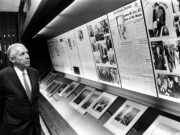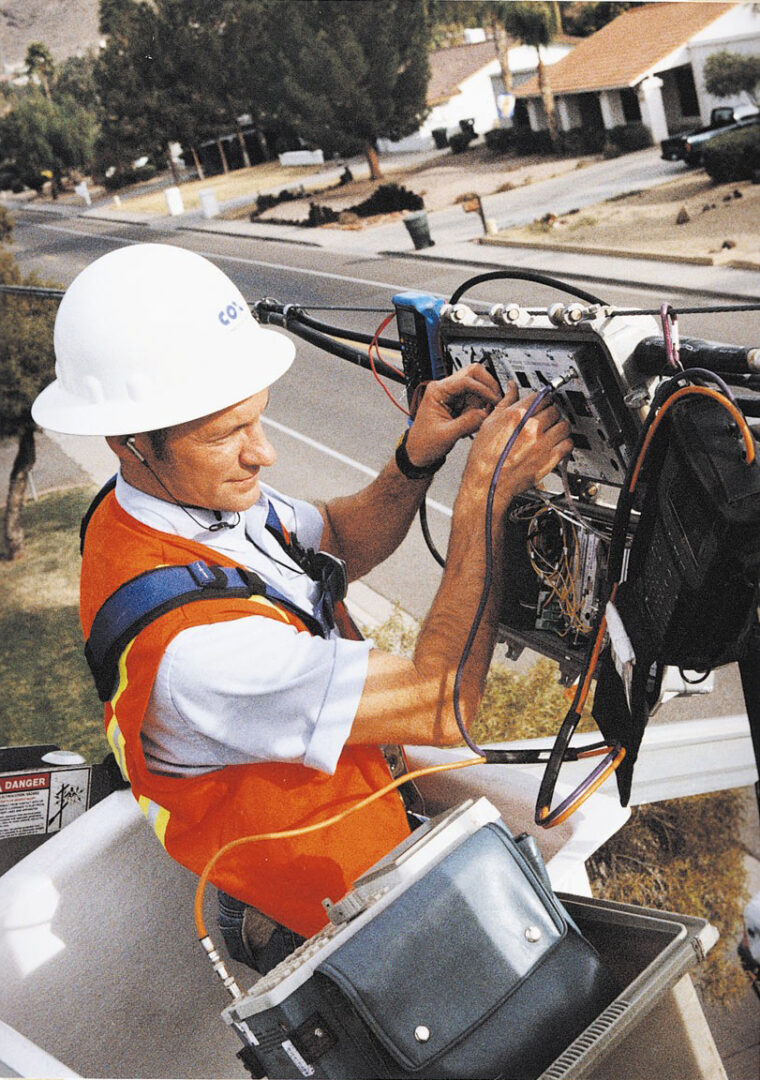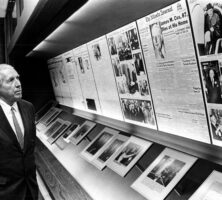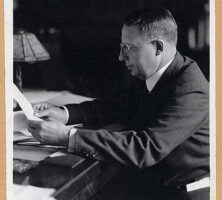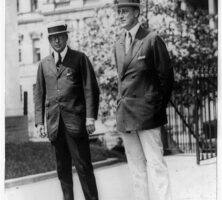Cox Enterprises is one of the largest media companies in the United States. In 2007 the company owned seventeen daily and twenty-five nondaily newspapers, eighty radio stations, fifteen television stations, and the nation’s third-largest cable television provider.
Early Growth of a Family Empire
James Middleton Cox began the company that would become Cox Enterprises in 1898, when he purchased the Dayton Evening News in Dayton, Ohio, for $26,000. As publisher, Cox developed a reputation for aggressive, reform journalism, and he characterized the Evening News as “the people’s paper.” Two years later the Evening News was among the top 100 newspapers in the country.
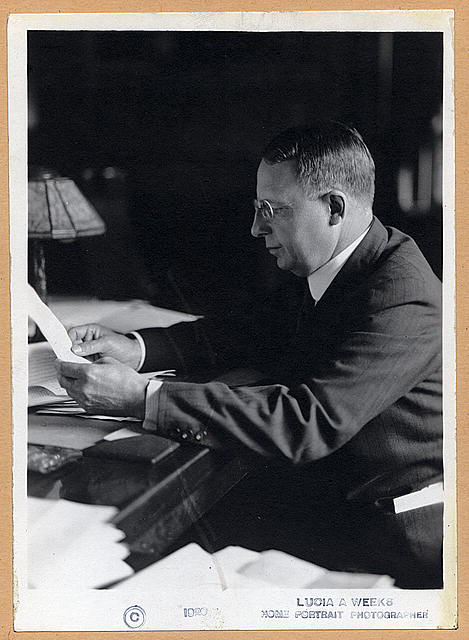
Courtesy of Library of Congress, Prints and Photographs Division
Cox was elected to represent Ohio’s Third District twice in the U.S. Congress, in 1909-11 and 1911-13. He resigned after being elected governor of Ohio at the height of that state’s Progressive movement. He served three terms—the first Ohio governor to do so—in 1913-15, 1917-19, and 1919-21—and left a legacy of reform legislation that extended from education and labor to government reorganization and welfare.
In 1920, at the Democratic National Convention in San Francisco, California, Cox was chosen as the Democratic nominee for president. Cox and running mate Franklin D. Roosevelt were defeated decisively by Republican Warren G. Harding, after Cox strongly endorsed Woodrow Wilson’s League of Nations and based his campaign on that issue.
Business success enabled him to acquire the Miami (Florida) Metropolis and the Canton (Ohio) News in 1923, and the Springfield (Ohio) Sun in 1928. The Canton News won a Pulitzer Prize in 1927 for its fight against municipal government corruption. After assuming control of the Metropolis, Cox revealed his philosophy of public service combined with community boosterism when he wrote that his newspapers “uphold the principles of Jeffersonian Democracy and devote [themselves] to the public interest. Any city growing. . .needs a vigilant press. The public interest must always be paramount.”
In 1934 Cox entered the broadcasting business when his son, James McMahon Cox (known as “Jim Jr.”), established WHIO-AM, the first radio station in the Dayton area. Broadcasting was still in its infancy when Cox began to build his broadcasting empire by buying a radio station in Erie, Pennsylvania, and having the license transferred to Dayton. J. Leonard Reinsch, hired as WHIO’s first manager, later became head of Cox Broadcasting.
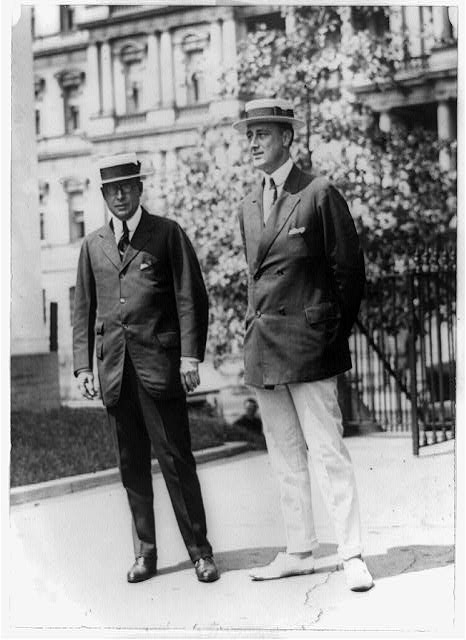
Courtesy of Library of Congress, Prints and Photographs Division
Cox was nearly seventy when he bought both the Atlanta
As part of the Atlanta Journal purchase, Cox also acquired WSB, the South’s first radio station, thereby making Atlanta the core of his media operations. On September 29, 1948, after Cox had spent years experimenting and meeting licensing requirements for television, WSB-TV went on the air. Two years later Cox purchased another Atlanta newspaper, the Constitution.
Transition
After Cox’s death in 1957, Jim Cox inherited control of most of his father’s $10 million estate and succeeded him as head of Cox Enterprises on July 31, 1957. Under his leadership Cox Industries became one of the first companies to enter cable television. The first cable system acquired by the company was in Lewistown, Pennsylvania, in 1962, followed over the years by systems across the country, including service in the Macon area.
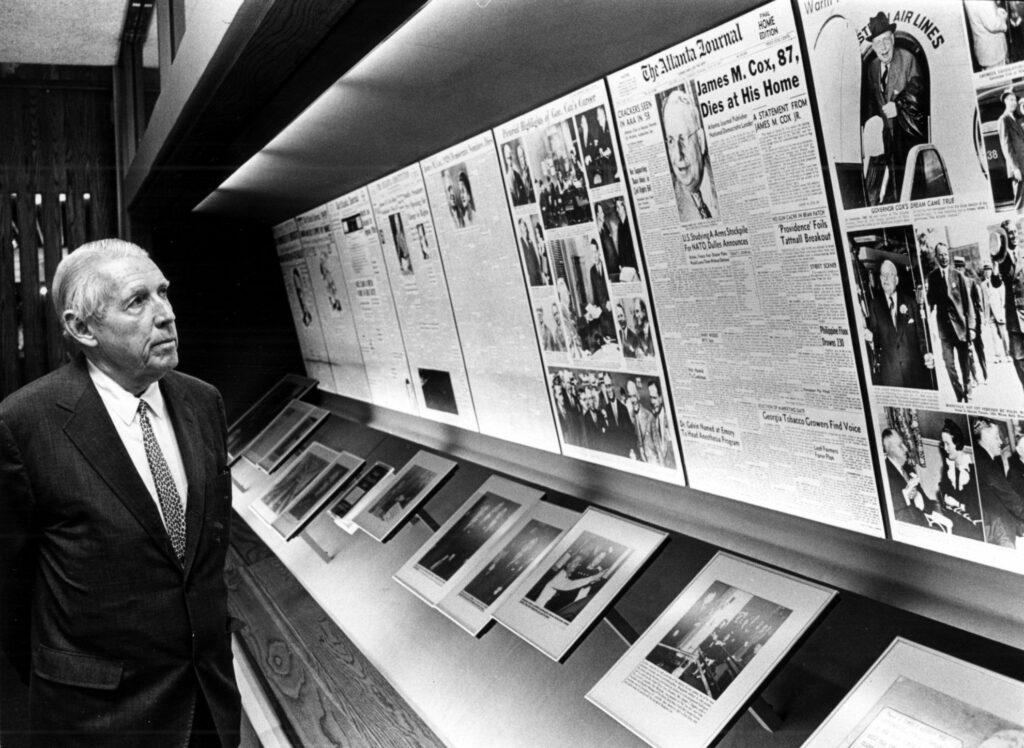
Courtesy of Atlanta Journal-Constitution.
In a move to realign operations as a result of organizational problems, Jim Cox established Cox Broadcasting in 1964 to operate the radio and television properties, as well as the company’s few cable television systems. Cox Broadcasting was organized as a public company, traded on the New York Stock Exchange. Jim Cox generally continued his father’s newspaper policies of decentralization and editorial independence, except during the 1972 presidential race, when he sent a memorandum to his newspapers recommending editorial support for Republican Richard Nixon over Democrat George McGovern.
Two years later the Atlanta newspapers themselves became news when editor Reg Murphy was kidnapped by the American Revolutionary Army in an attempt “to stop [the] lying, leftist, liberal news media.” Forty-nine hours later Murphy was released after Jim Cox paid the $700,000 ransom. (An Atlanta area resident and his wife subsequently were arrested for the crime, and the ransom money was recovered.)
Diversification and Growth
The company began diversifying its operations in the late 1960s, entering business publishing, motion-picture production (through the 1967 purchase of Bing Crosby Productions, which was dissolved in 1979), and automobile auction services (with its purchase in 1968 of Manheim Auctions, the nation’s largest car auction). The company acquired TeleRep, a national television sales representation firm, in 1972.
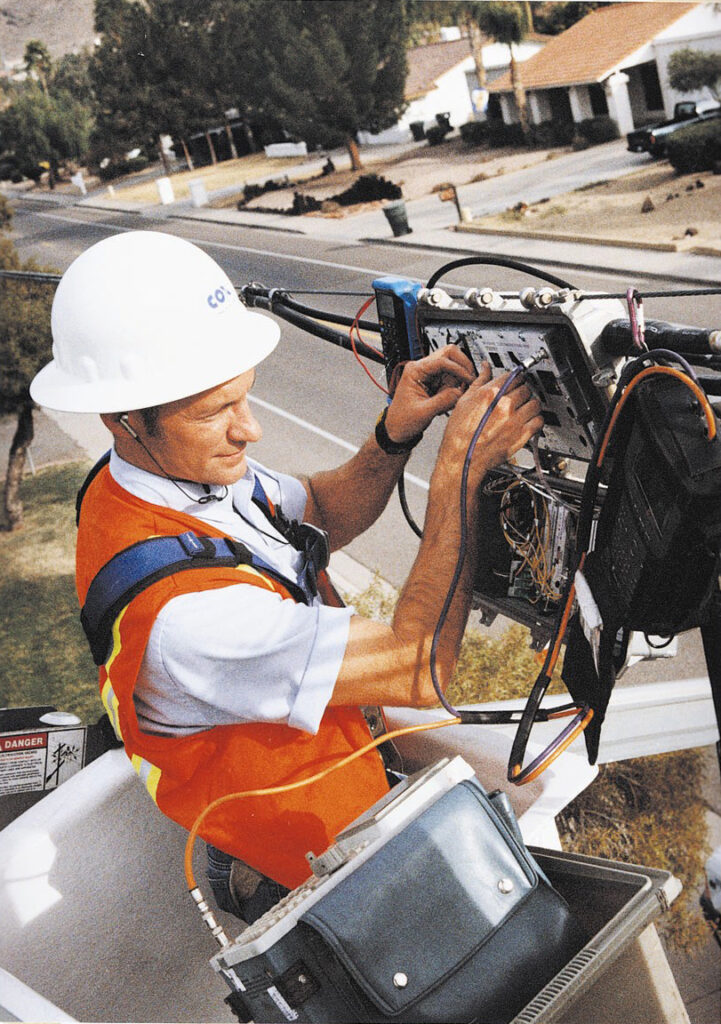
Courtesy of Cox Communications
In 1968 the company’s newspaper interests were organized as the private company Cox Enterprises, which was headquartered in Atlanta with Jim Cox as chairman. His death in 1974 left his two sisters, Anne Cox Chambers of Atlanta and Barbara Cox Anthony of Honolulu, Hawaii, in control of 95 percent of the privately owned company.
Administrative control of Cox Enterprises passed in 1974 to Garner Anthony, the husband of Barbara Cox Anthony. Anne Cox Chambers was named chairwoman of Atlanta Newspapers, and Barbara Cox Anthony chairwoman of Dayton Newspapers. Anthony served in this capacity, in addition to her position on the board of directors for Cox Enterprises, until her death in May 2007.
Expansion and diversification continued during Garner Anthony’s fourteen-year leadership of Cox Enterprises. During the same period, Cox Broadcasting’s cable division grew, and the company’s management decided to concentrate on its broadcasting and cable operations, selling several publishing properties and discontinuing the production of motion pictures. Manheim Auctions, with its record of growth and high profit margins, was retained.
In 1982 Cox Broadcasting changed its name to Cox Communications. While Cox Communications had been expanding in telecommunications, Cox Enterprises had been expanding as a major newspaper publishing company with the purchase of the News-Journal Corporation in Florida and the Southeast Paper Manufacturing Company of Dublin, Georgia. In the most significant decision of his tenure, Anthony completed a $1.3 billion buyout/merger of Cox Communications in September 1985 and transformed the separate newspaper and broadcasting companies into one of the largest media conglomerates in the nation, under the name Cox Enterprises.
In 1988 James Cox Kennedy, son of Barbara Cox Anthony, was named chairman and chief executive officer of Cox Enterprises. Under Kennedy’s leadership, the Cox Newspapers division purchased the Trader Publications, which publish more than 600,000 photo classified magazines each week, providing a marketplace for individuals to sell and trade cars, boats, and other items. The company announced in 1988 that the Miami News, which had participated in a joint operating agreement with Knight Ridder’s Miami Herald since 1966, would cease publication at the end of the year. However, Cox Enterprises continues to share in the operating income of the Herald until the year 2021, as the result of an amendment to the original agreement.
During the 1990s Cox Enterprises grew significantly. The Cox cable division merged with Times Mirror’s cable system in 1995, resulting in anew publicly traded company under the name Cox Communications. Cox Radio was established as a publicly traded company in 1996, and AutoTrader.com, an online automobile auction site, was created in 1999.
Cox Enterprises has four major divisions: newspaper publishing, cable television, television and radio broadcasting, and automobile auctions. The company doubled in value between 1992 and 1997. In 2005 Cox Enterprises had some 77,000 employees, operated some 300 separate businesses, and had annual revenue of more than $12 billion.


